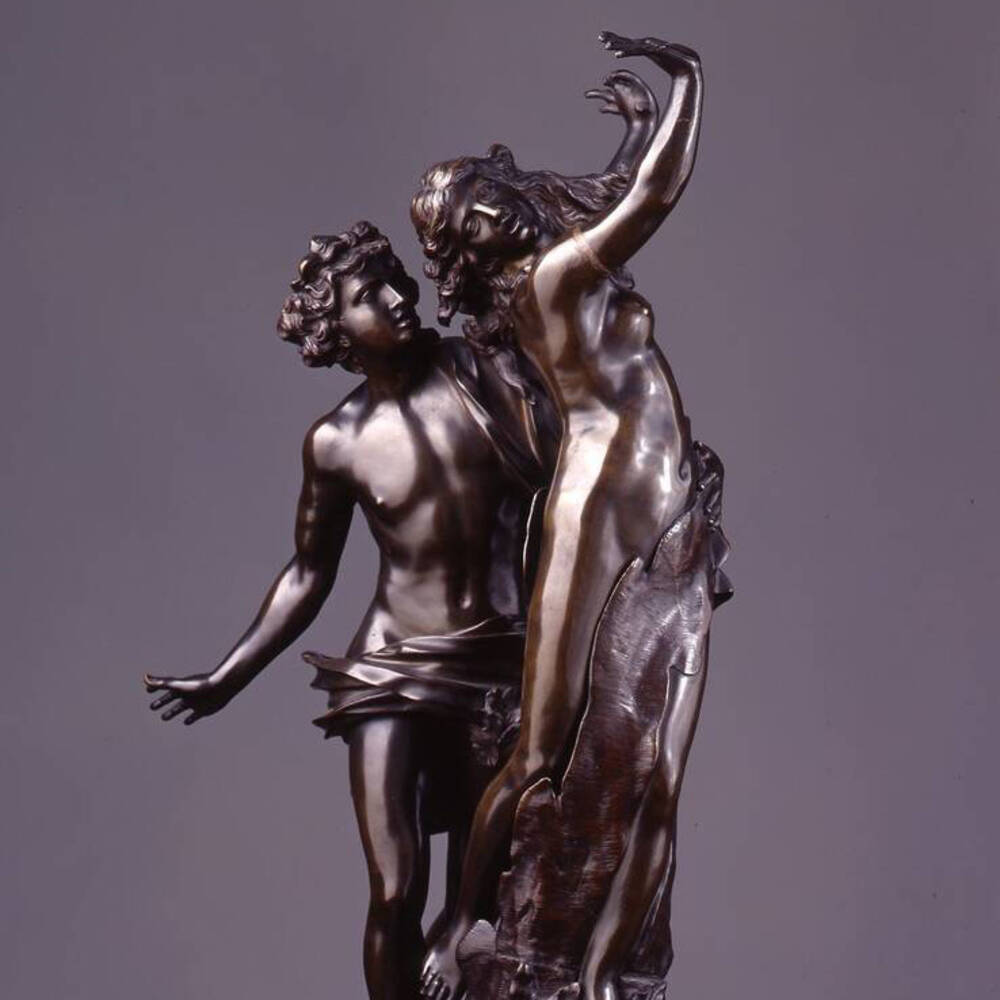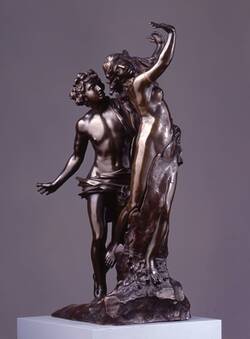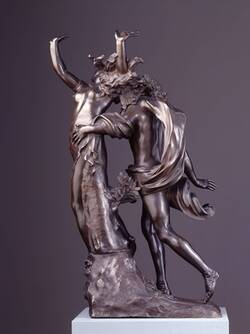In revenge against Apollo, who had mocked him, Cupid inflamed the god with immortal love for Daphne, while he brought about the opposite in her. When Apollo pursued the nymph who was fleeing from him, she turned in her despair into a laurel tree, which was henceforth sacred to the god. The small bronze repeats what is probably the most famous representation of the theme, created as a life-size marble group by the most important sculptor of the Baroque, Gian Lorenzo Bernini, in 1622-25.
Further Media
The story of Apollo and Daphne is a tale of unrequited love, but also of youthful recklessness. In a fit of arrogance, the young Apollo, god of the sun, mocked the chubby little god Cupid. Not only did Apollo make fun of Cupid’s short stature, but also how he wore his bow and arrows. An insulted Cupid was more dangerous than Apollo imagined. Cupid carefully planned his revenge, preparing two arrows. One hit Apollo, and he instantly fell desperately in love with the nymph Daphne. Cupid’s second arrow also hit its target – the beautiful Daphne. But instead of intense love for Apollo, it caused intense revulsion, even hatred. Apollo pursued Daphne, and as she fled from him she begged her father, the river god Peneus, to protect her. At the last moment, just as Apollo was about to catch her, Peneus turned her into a laurel tree. Here, we can still see Daphne as the bark of the laurel tree starts to enclose her body. In his Metamorphoses, the Roman poet Ovid collected and retold stories from classical mythology, including the story of Apollo and Daphne.
“Help me, father” she cries (...)
“... change me and destroy my baleful beauty which has pleased too well!”
Scarce had she made her prayer when through her limbs,
A dragging languor spread, her tender bosom
Was wrapped in thin smooth bark, her slender arms
Were changed to branches and her hair to leaves;
Her feet but now so swift were anchored fast
In numb stiff roots, her face and head became
The crown of a green tree; all that remained
Of Daphne was her shining loveliness.
Even like this, Apollo loved her, and placing his hand against the trunk
He felt her heart still quivering under the new bark.
He clasped the branches as if they were parts of human arms
And kissed the wood. But even the wood shrank from his kisses.”
- Location & Dating
- French, c. 1700
- Material & Technique
- Bronze
- Dimenions
- H: 76,7 cm, B: 30,6 cm, T: 47,5 cm Standfläche: B: 26,0 cm, T: 35,0 cm Gewicht: 38,0 kg
- Museum
- Skulpturensammlung
- Inventory number
- H4 153 / 006


